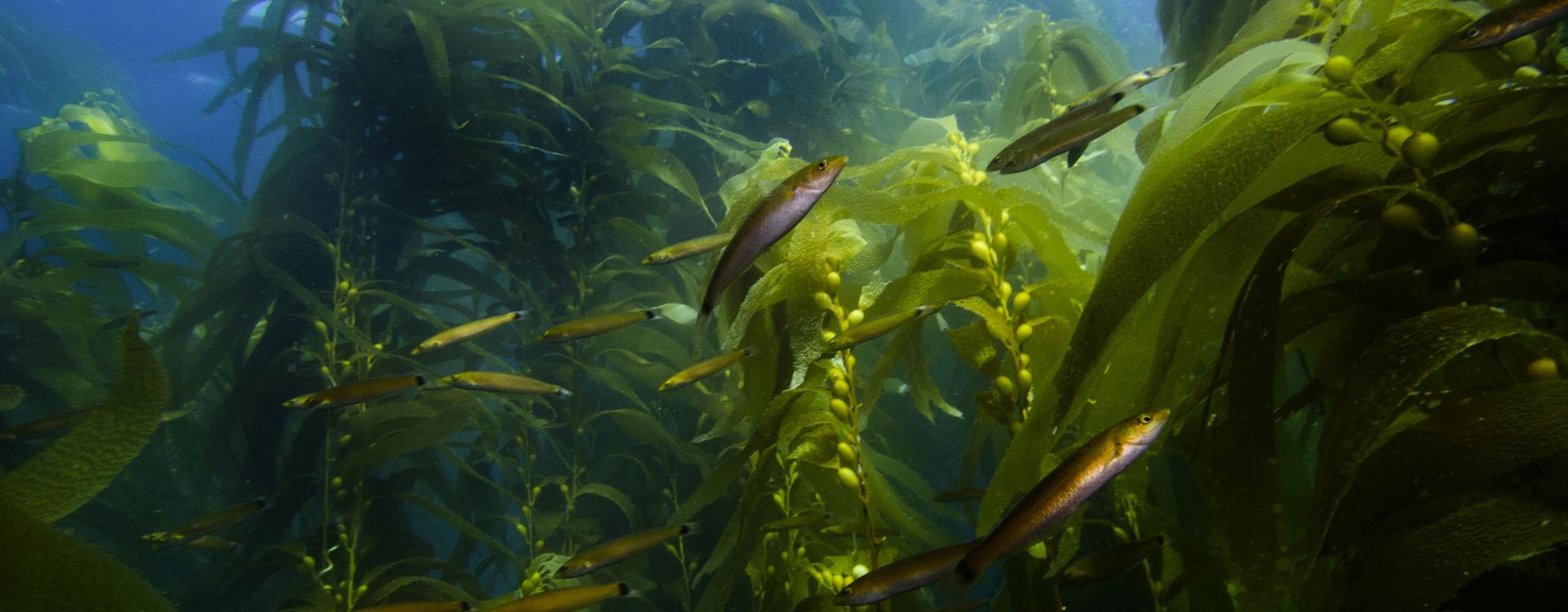
Photo Credit: Katie Davis-Koehn
What factors drive the health, growth and productivity of giant kelp? There are several, but according to researchers at UC Santa Barbara and at Woods Hole Oceanographic Institution (WHOI), what you see depends on the scale at which you’re observing.
“Depending on your spatial scale of observation — whether you are looking at kelp forests regionally or really honing in on a specific local area — the patterns that manifest at these scales may be indicative of different drivers,” said Tom Bell, a project scientist at UC Santa Barbara’s Earth Research Institute and assistant scientist at WHOI, and lead author of a paper published in the Proceedings of the National Academy of Sciences.
“Giant kelp is a foundation species and has an outsized role in the dynamics of kelp forest ecosystems,” said David Siegel, a professor of oceanography at UCSB and a co-author on the paper. As a result, he added, resource agencies and conservation groups are interested in monitoring and managing these ephemeral systems using novel remote sensing tools developed at UC Santa Barbara.
Using data collected by satellite and by aircraft, Bell and Siegel focused on a 4,000-square-kilometer study area in the Santa Barbara Channel, a section of UCSB’s Santa Barbara Coastal Long-Term Ecological Research site.
The researchers found that the effects of different drivers were more pronounced at different scales.
The use of new and advanced sensing technologies such as hyperspectral imaging will give ecologists “another tool in their toolkit to understand how systems change, whether those systems are lowland tropical forests or giant kelp,” Bell said. “This is going to be more important than ever as the environment becomes less predictable.” The paper, according to the researchers, provides proof-of-concept information for NASA’s upcoming Surface Biology and Geology satellite mission, which plans to use hyperspectral imaging to observe Earth processes on land and sea, as well as the effects of human activity on the environment.